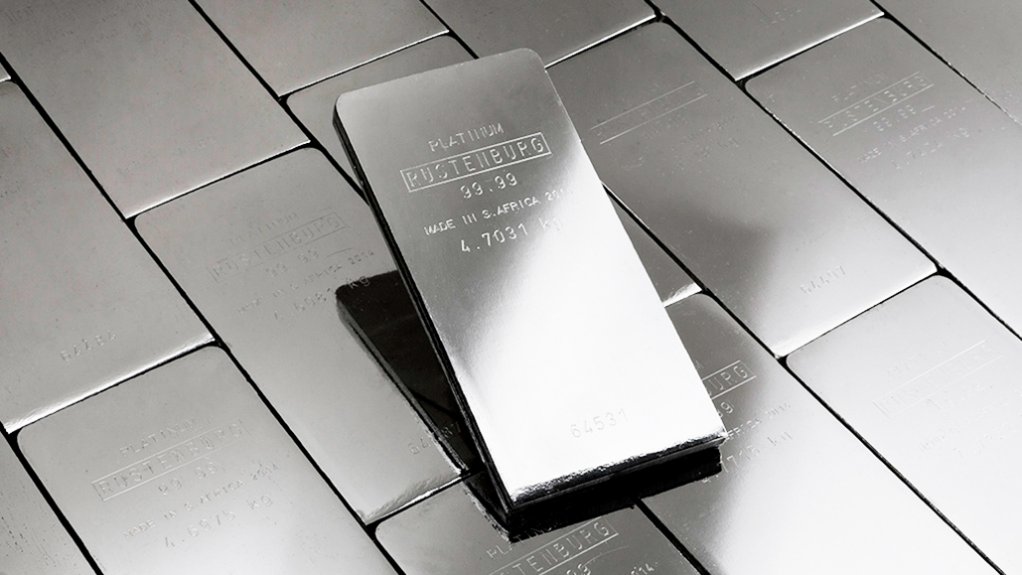JOHANNESBURG (miningweekly.com) – The convergence in platinum and palladium prices is likely to go further.
Fundamentals point more positively for platinum into 2025 on a better autocatalyst demand trend.
This will be so even as global internal combustion engine (ICE) vehicle production declines, Deutsche Bank Research metals & mining analysts note in a commodities outlook published on January 10.
Within the platinum group metals (PGMs) market, the supply and demand trends favour platinum over palladium, the analysts state.
Since November, it has been the view of the Deutsche Bank Research team that PGMs would remain under the shadow of a US recession and a consumer perception of poor vehicle buying conditions for the early part of the year.
This continues to be the case, with the forecast for a US recession for the first half of the year suggesting that PGM prices will remain under pressure for at least the first quarter.
A weaker performance in palladium versus platinum is consistent with the autocatalyst industry's substitution process underway between 2023 and 2025, which is seen as unlikely to reverse course.
History would suggest, the analysts state, that the PGMs are likely to see scope for recovery, on account of a US Federal Reserve pivot and easier credit conditions, which would improve vehicle buying conditions. Testing the S&P 500 over the course of previous recessions, the trough tends to be found somewhat after the halfway point.
From spot levels, the research team’s revised quarter-four forecasts of $1 350/oz in both platinum and palladium imply a 38% gain in palladium and a 44% gain in platinum.
PGM basket costs are the closest to producer cash costs since 2018, stress that has been evident most recently through Anglo American Platinum’s (Amplat's) reduction in production guidance for 2024 and 2025.
Amplat’s 300 000 oz lower PGMs guidance in 2024 is a result of lower own-mine production, while the 300 000 oz lower PGM guidance in 2025 is a result of lower purchase of concentrate.
Based on Amplat’s historical ratios over 2020 and 2022, this would imply a greater reduction in platinum output than palladium (134 000 oz vs 95 000 oz) in each year. However, the possibility that the third-party concentrate not purchased by Amplats finds its way to another refiner means that for the industry as a whole, the 2024 production cut is more certain.
On autocatalyst demand drivers, global ICE production, including non-plug-in hybrids, is poised to decline by -3.1% in 2024 and by -3.7% in 2025, owing to the gradual adoption of battery electric vehicles (BEVs).
Through 2025, its assumptions are consistent with the shallower BEV adoption curve indicated by Deutsche’s global autos team in December, but significantly less optimistic between 2025 and 2030.
Even with this less optimistic projection for BEV adoption, global ICE sales are set to decline more rapidly after 2025, accelerating to an annualised -5.1% between 2025 and 2030.
Only partially offsetting this is the tendency for manufacturers to use higher loadings to meet more stringent emissions standards, which amounts to a trend growth of 1.9% since 2006. The tightening trend in emissions regulation is not set to relax any time soon.
These drivers suggest, the analysts state, that palladium autocatalyst demand may fall by -270 000 oz to -300 000 oz in 2024 and 2025, and platinum autocatalyst demand by only -40 000 oz and -60 000 oz in 2024 and 2025, with substitution effects plausibly translating into a rise in platinum autocatalyst demand.
The upshot is that while 2024 supply-demand may still be close to balanced, a view incorporating 2025 would point to further deterioration in palladium balance relative to platinum, suggesting a potential for platinum to trade at a premium to palladium in 2025.
SUPPLY DECLINE
In a 25-page review for Auctus Metal Portfolios of Singapore, independent analyst Dr David Davis states that higher demand and declining South African mining supply are poised to result in a significant rise in the price of platinum.
Davis’ calculations imply that the quantum of above-ground platinum inventory, in Western Europe and the UK, has entered a critical red zone amid China, which has been buying volumes of platinum that exceed its demand since 2009, not exporting platinum.
Davis expects these trends to ignite the price of platinum within the next few months: “It’s only a matter of time before the impact of this growing global supply-demand deficit bites and we see a very substantial rise in the price of platinum,” he states.
EMAIL THIS ARTICLE SAVE THIS ARTICLE ARTICLE ENQUIRY
To subscribe email subscriptions@creamermedia.co.za or click here
To advertise email advertising@creamermedia.co.za or click here











